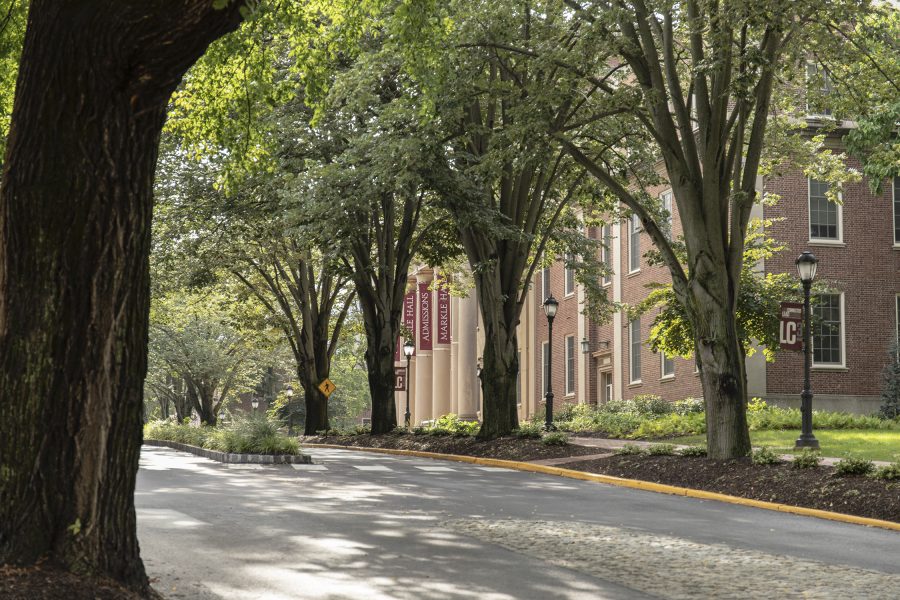The college’s capital campaign “Live Connected, Lead Change,” the public phase of which officially launched in December 2014 and ended in December 2018, surpassed its goal of $400 million by $25 million, according to Vice President of Development and College Relations Kim Spang. According to Spang, over 27,000 donors contributed to the final $425 million.
The campaign underwent a “private phase” for about six years before it was publicly launched.
The goal of $400 million was met over the summer, reaching around $403 million in June, according to Spang. After surpassing the goal, however, there was still a push to keep the momentum surrounding the campaign strong.
According to Spang, there was a “big bump” in gifts at the end of December. On Dec. 13, the date of the Lafayette holiday party in New York City, the campaign had reached around $421 million. Between then and Dec. 31, the end date of the campaign, there was an additional amount of over $4 million donated, according to Spang.
Categories of initiatives for the campaign fell into the four categories of Affordability, Distinction, Growth and Sustaining Excellence. Within each of these pillars, there are several initiatives toward which donations can go, according to a draft of the campaign initiatives breakdown provided by Stephanie Hayes, Executive Director of Campaign and Development Operations.
While most initiatives met their goals for the campaign, some initiatives fell short. The original fundraising goal for the Rockwell Integrated Sciences Center was $60 million, and donations toward the sciences center currently total $40.5 million, according to Spang. Fundraising for the Rockwell Integrated Sciences Center will continue post campaign, Spang said.
“If all the stars had aligned, we would have loved to secure all the funds by the end of December, but that’s when we knew we would be fundraising post,” Spang said.
Two other initiatives, Dedicated Academic Facilities and Connecting the Campus Community, fell short of their goals by over $10 million, according to the draft of the campaign initiatives breakdown. The Dedicated Academic Facilities initiative refers to the need to renovate academic spaces for when several departments relocate to the Rockwell Integrated Sciences Center. According to Hayes, the timing for several of the projects “did not align” with the timeframe of the campaign. The Connecting the Campus Community initiative refers to enhancements within residential and student life for which the timeline also did not match the campaign timeframe, according to Hayes. Although the athletics initiative was also slightly under goal, Spang said there will be continued post-campaign fundraising in this area.
Although some fell short, most initiatives included in the campaign reached or surpassed their goals. For example, the goal for the Financial Aid initiative, which was adjusted in Feb. 2016 from $60 million to $85 million, has been surpassed, totaling approximately $86.7 million, according to the draft of the campaign initiatives breakdown. The Williams Arts Campus and Programming and Technology and Innovative Teaching and Learning initiatives also surpassed their goals.
“Financial aid really is and has always been something we fundraise for, but in this campaign with the President’s Challenge, we exceeded our goal and also endowed 195 new scholarships just during that time frame,” Spang said.
There is also over $70 million in donations that have not been allocated to specific initiatives, according to Spang. Approximately $15 million of these donations are either unrestricted endowments or unrestricted funding that came to the college not as part of the annual fund, Hayes said. Some of these unrestricted funds come from donors who may pass away and donate money to “support the college in its entirety,” Hayes added.
“There are just a few things that don’t really fit in a bucket,” Hayes said.
Several donors also made gifts directly to new initiatives that were developed during the campaign, according to Spang. For example, some donors made gifts in support of the Dyer Center for Innovation and Entrepreneurship. The STEM center funded by Daniel and Heidi Hanson ‘91 is another center to receive support from the campaign.
The campus community is invited to commemorate the success of the capital campaign on Thursday, Feb. 21 at a celebration in Farinon from 11 a.m. to 1 p.m.
“It’s just our way of thanking everyone and having a pride moment for us all,” Hayes said.




















































































































